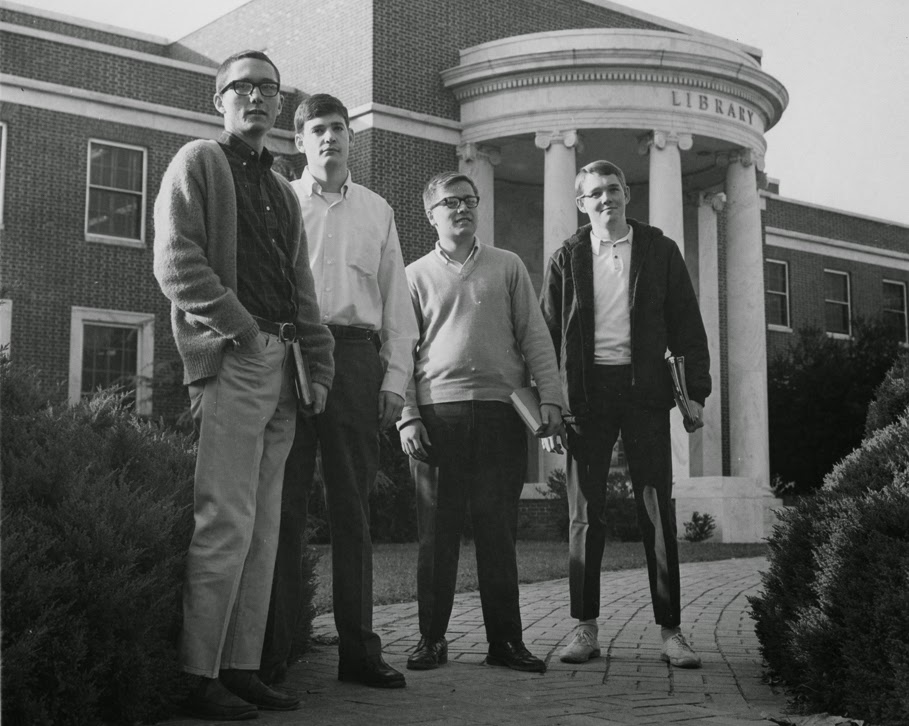The institution now known as The University of North Carolina at Greensboro has undergone a number of name changes since its founding in 1891 as the State Normal and Industrial School for White Girls. Other names include State Normal and Industrial College (1897-1919), North Carolina College for Woman (1919-1932), and the Woman’s College of the University of North Carolina (1932-1963). It was not until July 1963 that the school was called The University of North Carolina at Greensboro, a name that it has now held for fifty years.
This final name change came about after newly-elected North Carolina Governor Terry Sanford created a Commission on Education beyond the High School in 1961. Headed by Winston-Salem lawyer Irving E. Carlyle, this Commission’s final report (issued in 1962) called for a major overall of the state’s higher education system to deal with a predicted near doubling of college enrollments by 1975.
The 1963 Legislature acted on the report’s recommendations and created a community college system, elevated the two-year state-supported institutions in Charlotte, Asheville, and Wilmington to four-year institutions, and designated the three existing UNC branches to be known as the University of North Carolina at Chapel Hill, at Greensboro, and at Raleigh (State College alumni fought against designation of their campus as UNC Raleigh, and instead the school became North Carolina State University). Additionally, the years of single-sex education at the Greensboro campus ended, as all UNC schools were made coeducational.
Reactions on the Greensboro campus were mixed. Students were divided; they formed Pink and Blue factions, and took turns painting the McIver statue and decorating the campus in these colors to show their support of or opposition to coeducation. The Carolinian reported the division and ultimately supported the change.
Faculty members were also split. The focus of the university on liberal arts was to continue, but with additional professional programs added. Many feared that women would gradually be eliminated from the faculty or reduced to low-level positions teaching introductory courses only. Others worried that university status would drive undergraduate teaching into the background in favor of growing graduate programs.
Campus administrators, however, favored the change, with most of them viewing coeducation as inevitable. With over 2,000 woman already enrolled at Chapel Hill and State building its first women’s dormitory, administrators in Greensboro saw their monopoly over female students in the state eroding. Some also hoped that being coeducational and having university status would bring more equitable appropriations from legislators and the UNC system.
 |
| Male undergraduates at UNCG, 1964 |
In July 1963, the state legislature officially renamed Woman’s College to The University of North Carolina at Greensboro. One year later, in Fall 1964, the first male undergraduates began to arrive. Some of the fears of those opposed to coeducation proved true. For instance, in Fall 1963, 56 percent of the full-time faculty were women. From 1966 to 1970, 70 percent of the newly-hired faculty members were men. And by 1979, only 36 percent of faculty members were female. Similarly, from 1970-1995, all but five of the elected Student Government Association presidents were men.
But the institution saw positive growth and development in graduate studies and new areas. By 1966, the school had created three new professional schools (music, education, and home economics) and a college of arts and sciences, and adopted a university organizational structure with many new vice chancellors and deans. Three more professional schools were added by 1971 (nursing in 1966, business and economics in 1970, and health, physical education, and recreation in 1971). Enrollment grew from about 3,700 in 1963 to 9,500 in 1975. Ultimately, UNCG continued to provide a vital service, furnishing educational, economic, and social mobility to those in the region, a vision not so different from that of the institution’s founder, Charles Duncan McIver.
Article by Erin Lawrimore
